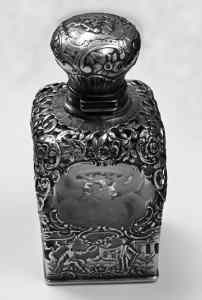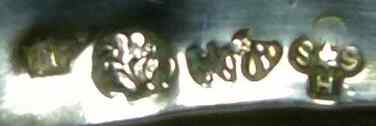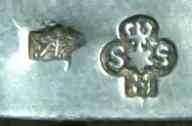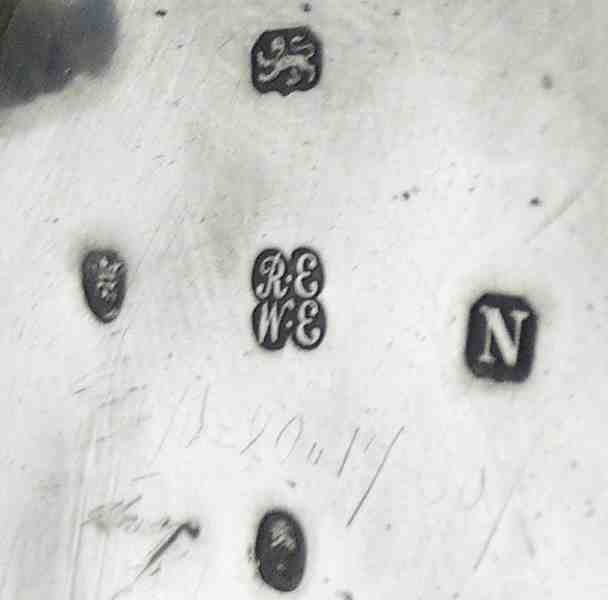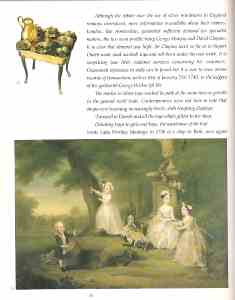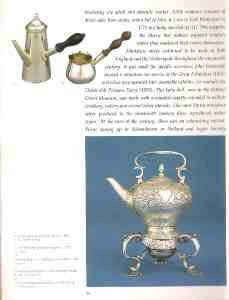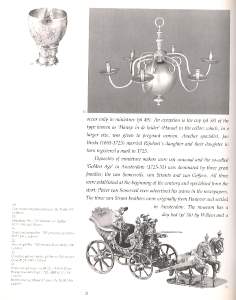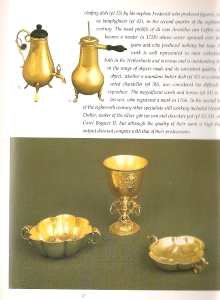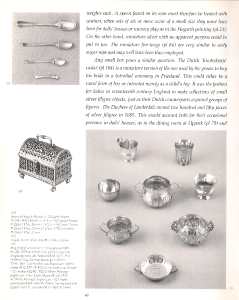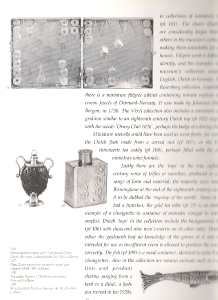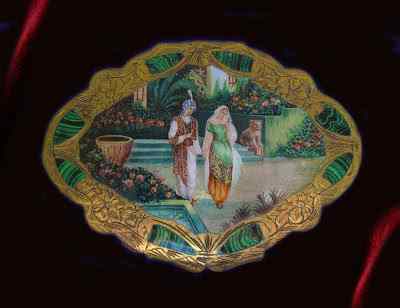
Michael Hetherington presents:
Italian Enamelled Compacts - Cases by Ottavio Spinelli

... In earlier writings on other silversmiths such as Gino
Bicchielli, Renzo Cassetti and Giuliano Spinelli (undoubtedly a
relative of Ottavio's), I have attempted to identify particular
characteristics of the case types used by each artisan as well
as the decorative techniques they employed. Because after a
number of years looking at these cases it was apparent that
there were differences - many that are subtle, I admit - that
could help in identifying which particular silversmith produced
each case.
Now, this exercise in spotting the differences is made
irrelevant if the unique silversmith's mark is legible or if
there is some other mark that can reliably identify the
silversmith in question. In the case of Ottavio Spinelli this is
happily the case because there is another mark he used that is
unlike any other and, indeed, he seems to have been the only
Florentine silversmith who used the standard manufacturer's mark
together with his other unique mark. This mark is the stamp of a
bird.....
click here

Welcome to new ASCAS members:
Roberto de Marca - Brazil
Juliana van der Voorden - The Netherlands
Members' Window # 108

Alan Yates presents:
Sterling Silver or Silverplate? What is Better?

Although I am somewhat obsessed about whether something
is silver or plated, I am in fact not overly obsessed as
are many other collectors of my acquaintance. I say this
for two reasons: first, historically there has never
been a wider gap between the price of a silver item and
its equivalent in plated silver or Sheffield Plate.
Which clearly means that there are some wonderful plated
silver pieces available on the market more under rated
and underpriced today than ever. And secondly, in my
opinion, some things are better if not sterling silver,
by which I mean more practical if SP instead of sterling
simply because sterling silver is relatively soft.......
click here

|
Miroslav Cogan writes:
...I would like to ask you for help with identification of the
mark in cross shape wit letters SSH and star in-between: I am
working in small museum in Turnov and have no opportunity to buy
or study specialized books of silver marks.
These marks are used on this bottle for instance.
Thank you for your collaboration
Best regards
Miroslav Cogan
The maker is Storck & Sinsheimer, Hanau (Jacob Stork and
Louis Sinsheimer), Germany. Active 1874-1926. It's a typical "Hanau
silver" see my website at
http://www.silvercollection.it/germansilverhallmarks4.html
The other mark (winged A) is an Austrian import mark 1901-1921,
see my website at
http://www.silvercollection.it/austriansilverhallmarks.html
Giorgio Busetto
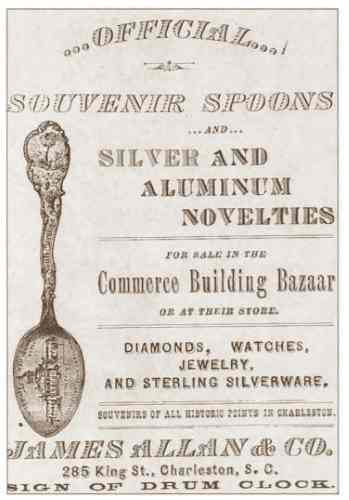
|
This month ASCAS presents an ancient advertisement
of:
JAMES ALLAN & CO
285 King Street - Charleston S.C.
An advertisement printed in the official
Exposition Guide of the 1901 Charleston Exposition,
offering souvenir spoons and other metallic
keepsakes from James Allan & Company, a Charleston
Jeweller and silversmith. Besides their King Street
location, the firm had a booth inside the Palace of
Commerce. Sterling silver souvenir spoons were
sought-after collectibles at the turn of the 19th
century and James Allan & Co had purchased the
concession to offer fairgoers the Official
Exposition spoons.
This image is part of the
ADVERTISEMENTS IN SILVER - SILVER ADVERTISING
section of www.silvercollection.it website
|
"A WORD per MONTH"


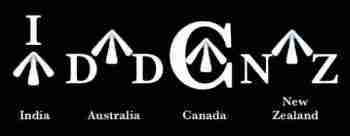
|
BROAD ARROW
The 'broad arrow' is the symbol used to indicate the
British Government property. The principal duty of the
Office of Ordnance (1544) which became Board of Ordnance
(1597) was to supply guns, ammunitions and equipment to
the King's Navy. In 1857 the task was assumed by the War
Office.
The 'broad arrow' symbol was used since 1661 as an
intrinsically Royal symbol
Under the Public Store Act of 1875 the symbol has been
applied in any metal object supplied or issued by the
War Office.......
more
|
"A SILVERSMITH per MONTH"
|
|
EMES FAMILY, SILVERSMITHS IN LONDON
HENRY CHAWNER & JOHN EMES - JOHN EMES
REBECCA EMES & WILLIAM EMES - REBECCA EMES & EDWARD
BARNARD
John Emes was apprenticed in
1778 to William Woollett, goldsmith and engraver
obtaining his freedom of the Goldsmiths' Company in
1796.
In the same year he entered in partnership with Henry
Chawner registering their mark "HC over IE" as 'Plate
Workers' at Amen Corner on 27 August 1796.
Soon after, owing to semi-retirement of Henry Chawner,
the business was mostly managed by John Emes that on 10
January 1798 registered his own mark and the dissolution
of the partnership.
John Emes continued to work at Amen Corner until his
death in 1808. His work, mostly tea and coffee services,
shows a taste for elegant design and fine finish.....
more
|
"A BOOK ON MY SHELF"
In this column we present books, new
or ancient, dealing with silver in all its aspects (history,
marks, oddities...). This isn't a "book review" but only a fair
presentation of some useful "tools" that anyone may have in the
shelf of his bookcase.
ASCAS members are invited to contribute to this column
(click to enlarge images)
In the "book on my shelf" of this month ASCAS presents:
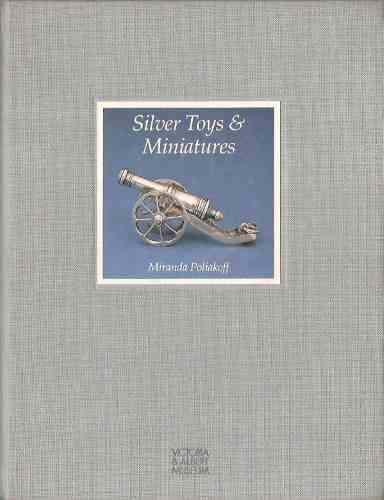
|
SILVER TOYS & MINIATURES
by Miranda Poliakoff
Victoria & Albert Museum
Edited by Philippa Glanville
Printed and bound in the Netherlands
by Drukkerij de Lange/van Leer BV
c. 1980
A Victoria & Albert Museum 48 pages widely
illustrated book edited c. 1980.
(from the Introduction): Model or miniature work in
metal has been made since ancient times; miniature
bronze utensils have been found in Egypt and Roman iron
toys in Britain, all probably votive offerings. From the
mid seventeenth century a large number of tiny silver
objects were produced in the Netherlands and later in
England. The Victoria and Albert Museum is fortunate in
possessing a large collection of these 'toys'.......
|
Closing our SEPTEMBER 2015 edition of ASCAS Newsletter I
hope you have appreciated its content.
Your comments, suggestions and advice will be of great help.
My thanks to Miroslav Cogan, Michael Hetherington and Alan Yates
for their precious contributions.
Giorgio Busetto
Secretary
DISCLAIMER AND PRIVACY POLICY
ASCAS is a community of people having a common
interest in antique silver.
It is a non-profit association without commercial links.
Membership is open to whomever has a true interest in
this subject matter.
ASCAS has no real property and no fees are requested nor
accepted from members.
ASCAS keeps in touch with its members only through
periodical newsletters, e-mails and web-site updating
and ignores and is not responsible for any other
activity pursued by its members.
Likewise, ASCAS is not responsible for opinions,
evaluation and images displayed, and in any form
published or supplied for publication, by its members
who, in any case, maintain the property of their works
and assure the respect of national and international
legislation about Intellectual Property.
ASCAS does not have the full addresses of its members
(only town, country and e-mail address are requested for
membership).
ASCAS handles and protects with care its members' e-mail
addresses, will not disclose the addresses to third
parties, will use this information only to reply to
requests received from members and for communications
strictly related to its activity.
These rules are expressly accepted by submitting the
membership request.
|
|
 newsletter
# 136 September 2015
newsletter
# 136 September 2015







